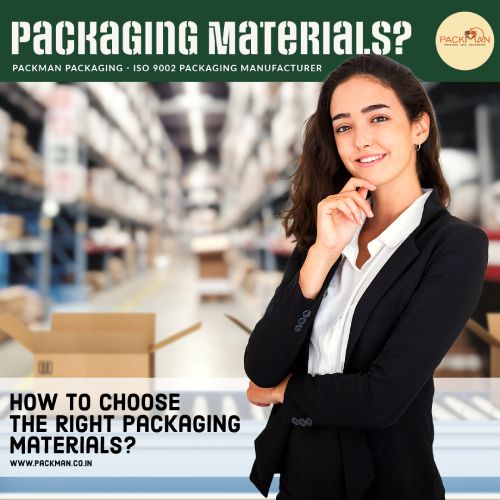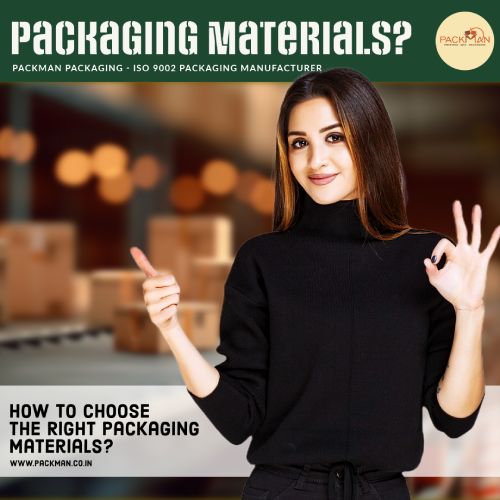In today’s cutthroat market, packaging is a make-or-break factor for a product’s triumph. Packaging materials are no longer just vessels to contain and protect a product; they have evolved into powerful marketing tools that can shape consumers’ perceptions and influence their purchasing decisions. Businesses have come to recognize that the right packaging materials are a cornerstone of their marketing strategy.
What are the ways to choose the right packaging materials?
Mr. Gaurav Jalan, Founder of Packman Packaging (Packman is one of the leading custom packaging manufacturers in India) explores the ways to choose the right packaging material in this article.
1. Brand Identity and Target Audience
The journey of choosing the right packaging materials begins with a deep understanding of your brand identity and target audience. Your packaging should reflect your brand’s values and personality. Consider your product’s positioning in the market. Is it eco-friendly, luxurious, or budget-friendly?
Does it appeal to children, adults, or a niche market? Your packaging materials should align with the image you want to convey to your customers. Environmentally conscious businesses should opt for recyclable materials, while those selling delicate items may prioritize cost-efficiency over recyclability. Research your key demographics to optimize packaging materials, colors, and design for maximum impact.
2. Know Your Product
Understanding the product is vital for choosing the right packaging. Factors like weight, shape, and size matter. The product’s nature and details are crucial too. They help ensure safe delivery to consumers. Consider size, shape, fragility, and special needs. For instance, delicate items might need cushioning, while food products may require airtight seals.
3. Strength Matters
Beyond aesthetics, packaging materials must ensure the safety and protection of your product. Fragile items require sturdy materials, while perishables need materials that maintain freshness. Check the product’s weight, dimensions, and susceptibility to damage when choosing packaging materials. Materials such as corrugated cardboard, bubble wrap, and foam inserts can provide essential protection. Consider factors like how long the product can be stored, storage conditions, and if tamper-evident features are necessary. For example, the pharmaceutical and biomedical industries have strict packaging requirements.
4. Money Matters
Budgeting is crucial when selecting packaging materials, but don’t just go for the cheapest option. Cutting corners can lead to long-term product damage and reduced sales. Your budget should cover both the packaging and its design. Consider whether you can afford your desired packaging material, as prices vary. For example, flexible pouches are gaining popularity due to their lower cost compared to traditional glass jars. They are lighter, take up less space, and eliminate the need for labels and adhesives. Glass jars require more materials and additional expenses for labels and adhesives, while flexible pouches allow direct printing.
5. Mode of Transportation
The way your product is transported is crucial for picking the right packaging material. Durability is key. If your packaging doesn’t hold up during transport, it’s a problem. You don’t want your carefully designed packaging to get damaged before it reaches its destination. So, consider how the product will be moved when choosing the packaging material. Factors such as fragility, weight, destination, and mode of transport impact the choice. Lightweight and durable materials are ideal for air travel, while heavier, crush-resistant materials may be more suitable for ground transportation.
6. Environmental Impact
In the age of sustainability, choosing eco-friendly packaging materials is not just a trend; it’s a moral and market imperative. Consumers are increasingly eco-conscious, and they favor products with minimal environmental impact and are even willing to pay more. Opt for biodegradable, recyclable, or reusable packaging materials to reduce your carbon footprint. Not only does this appeal to environmentally conscious consumers, but it also contributes to a positive brand image. Surprisingly, heavy glass and metal containers have a higher carbon footprint than flexible, non-recyclable plastics, which can harm the environment. Choose wisely to truly make a positive impact.
Now that you have gained some knowledge about the points to be kept in mind while selecting the right packaging material, it will be easier for you to make informed decisions that align with your brand identity, target audience, and product needs.





